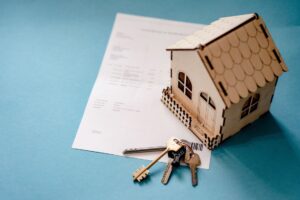Of all the considerations that investors make before investing in real estate, perhaps the most important is the income potential of the investment, and this can best be determined by calculating its returns. So, what is a good cash on cash return in real estate?
What Is a Good Cash on Cash Return in Real Estate?
A good return on any real estate investment, is anything between 8-12%. However, this figure is subjective as the returns depends on several factors such as the type and class of the property, and its location. As a result, different types of investments offer different rates of return.

It is therefore important for investors to evaluate and assess this metric across different properties so as to better understand how these factors impact their overall portfolios and profits earned.
What Is Cash on Cash Return?
This metric, also commonly referred to as cash yield, is regarded as one of the most important calculations that can help real estate investors determine how profitable a prospective investment is. It measures the net income generated by a property in relation to the purchase price of the same property.
This gives you an idea of how much of your initial investment you are earning back annually. This calculation factors in expenses like property taxes, maintenance fees, the closing fees, and insurance premiums.
However, cash yield only provides limited insight into a property’s financial performance short-term, without the impacts of other factors such as:
- Taxes
- Potential appreciation
- Future cash flow, or
- Depreciation of the property.
Therefore, it is advisable to pair this metric with other indicators.
How to Calculate Cash Yield
Cash yield can be calculated using the popularly accepted formula:
Cash On Cash Return = (Annual Cash Flow / Total Cash Investment) multiplied by 100, where annual cash flow includes:
- Gross rent
- Operating expenses
- Annual mortgage payment
- Vacancy, and
- Credit loss.
To better understand how to calculate this metric, follow this step-by-step explanation:

- Calculate your net operating income by deducting your total operating expenses, including vacancies from your total revenue. This gives you your annual pre-tax cash flow
- Next, calculate your total cash already invested in the property. This includes your down payment, financing, and closing costs, holding and carry costs, repairs, and maintenance
- Finally, input the results obtained into the formula. This gives you your percentage return.
Let’s take a quick example: An investor buys a property on a mortgage for $1 million, putting $100,000 as a down payment, and $10,000 cash for secondary expenses like maintenance costs. After a year of paying $25,000 as mortgage payments with a principal repayment of $5,000, the investor decides to sell the property for $1.1 million.
The total cash outflow of the investor is ($100,000+$10,000+$25,000) = $135,000 while the total cash inflow is [$1,100,000 – $895,000] = $205,000. Therefore, the cash-on-cash return is [($205,000 – $135,000) ÷ $135,000 x 100] = 51.85%.
Factors that Affect Cash Yield in Northern Kentucky
Different factors play a role in a property’s yield with respect to cash, thus making each property’s calculation unique to it. For instance, the return of a duplex cannot be compared with that of a high-rise apartment, even though they are both multifamily.
In Cincinnati-Northern Kentucky, these are some factors that determine the cash yield of property:
Location
The location of any property influences its potential yearly income and expenses, thus greatly affecting its cash yield. Properties located in urban areas within and around the state, such as Cincinnati, Louisville, and Lexington, are more likely to attract more tenants with the potential to pay high prices in rent.
Hence, such properties generate more income through rent and enable investors to earn back the money initially invested in the property at a faster rate. However, the same can not be said for properties in suburban areas or rural locations.
Type of Property
When determining the cash yield of a prospective property, one needs to consider the type of property involved. Commercial properties with a high potential for value appreciation, like multifamily properties and office buildings are likely to have a higher return when compared to single-family residences (SFR) and small apartments.

This is mainly due to the constant rental income these properties provide, as well as their high potential to appreciate over time, especially in great locations where tenant occupancy thrives.
Class of Property
The class of a property significantly influences the cash yield generated by the prospective property. While class A and B properties are typically the safest investment options as they have the best appreciation potential, class C or D properties offer immediate profit and the best potential returns.
For example, investors are more likely to get better cash yield investing in class C and D properties than with class A or B. This is because the C and D properties have lower acquisition costs due to the fact that they are old.
Hiring professional and experienced agents like Si Vales Valeo Real Estate who have a vast network and understanding of the local market in Cincinnati-Northern Kentucky will help you to achieve your investment goals. They help you identify the best properties within your vicinity and also make informed decisions when acquiring your prospective property.
Related Questions
What Is the 1% Rule for Rental Property?
The 1% rule states that for a property to be considered profitable, its gross monthly income should be equal to or greater than 1% of the property purchase price or value. For example, if a rental property costs $100,000, then its rental income has to be at least $1,000 to meet the 1% rule.
What Is a Good Equity Multiple in Real Estate?
Real estate experts recommend that you should have an equity multiple that is greater than 1.0x to ensure you are making back the money you invested in your property. A value below 1.0x indicates that the investor is incurring losses on the said property.
Conclusion
This metric is a relatively popular indicator that investors use to evaluate a prospective investment’s profitability before making major financial decisions. At this point, you would be able to understand what this return is, how to calculate it, and factor your results in making the right decision in relation to an investment.






